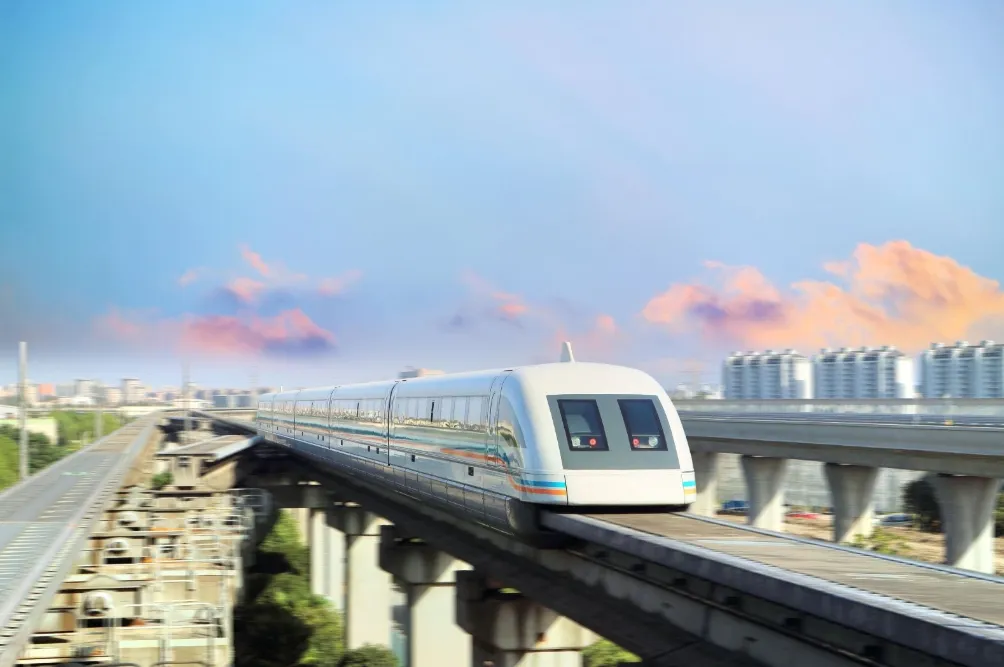Introduction
Travelers arriving in Shanghai often face the challenge of reaching Pudong International Airport quickly and comfortably. The Shanghai Maglev train offers a futuristic solution. It’s not just fast—it’s one of the world’s first commercial high-speed magnetic levitation systems. This guide covers everything you need to know about using the Maglev to get to or from the airport. From ticket prices to operating hours, we’ll help you make the most of this engineering marvel. Whether you’re a tourist or a business traveler, this efficient transport option saves time and offers a unique experience. Let’s explore why the Shanghai Maglev train stands out among urban transit options.
What Is the Shanghai Maglev Train?
The Shanghai Maglev train, officially known as the Shanghai Transrapid, uses magnetic levitation technology. Unlike traditional trains, it floats above the track, eliminating friction. This allows for incredibly high speeds—up to 431 km/h (268 mph) during testing. In regular service, it runs at 430 km/h. Opened in 2004, it connects Longyang Road Station to Pudong Airport. The entire journey takes just 7 to 8 minutes.
This train was a joint project between Germany and China. It uses German Transrapid technology. While only one line exists today, it remains a symbol of innovation. The Maglev is not part of the Shanghai Metro but operates as a separate system. Its sleek design and smooth ride make it a favorite among tech enthusiasts and travelers alike.
Route and Station Details
The Maglev route is short but highly efficient. It runs 30.5 kilometers (19 miles) between Longyang Road and Pudong Airport. There are only two stations:
- Longyang Road Station (interchange with Metro Lines 2, 7, 16, and 18)
- Pudong International Airport Station (Terminal 1 and 2 accessible via walkway)
Longyang Road is the main access point from central Shanghai. Travelers can transfer from Metro Line 2, which connects to major areas like Lujiazui and People’s Square. At Pudong Airport, the Maglev station is located between Terminal 1 and 2. A covered walkway makes access easy, even with luggage.
Trains run approximately every 15 to 20 minutes. Service starts at 6:45 AM and ends at 9:40 PM from Longyang Road. From the airport, the first departure is at 7:20 AM and the last at 9:40 PM.
Speed and Performance
The Shanghai Maglev train reaches a top operating speed of 430 km/h. That makes it the fastest commercial electric train in regular service. Acceleration is smooth and noticeable. Within minutes, the train hits cruising speed. The entire trip from Longyang Road to the airport takes under 8 minutes.
For comparison:
| Transport Option | Travel Time (to Pudong Airport) |
|---|---|
| Maglev Train | 7–8 minutes |
| Metro Line 2 | ~60 minutes |
| Taxi (no traffic) | 30–40 minutes |
The train’s magnetic levitation system uses electromagnetic forces to lift and propel the train. This reduces mechanical wear and noise. The ride is remarkably quiet and stable. Even at top speed, there’s minimal vibration.
How to Ride the Shanghai Maglev
Boarding the Maglev is simple. At Longyang Road Station, follow signs for the Maglev terminal. Tickets can be purchased at counters or automated machines. Payment options include cash, credit cards, and mobile payments like Alipay.
Fare options:
- Single ride: ¥50 (standard), ¥40 (return)
- Combined ticket with Metro: ¥55 (Maglev + unlimited metro use)
After purchasing, pass through security and wait in the designated platform area. Trains are punctual. Announcements are made in Mandarin and English. Seating is assigned, but not strictly enforced.
Pro tip: Buy the round-trip ticket even if you’re not sure you’ll use it. The return fare is cheaper, and tickets are valid for 30 days.
Ticket Pricing and Value
At ¥50 per one-way trip, the Maglev is more expensive than the metro. However, it offers unmatched speed and comfort. For travelers with tight schedules or heavy luggage, the cost is justified.
The combined ticket (¥55) includes a one-way Maglev ride and unlimited use of the Shanghai Metro on the same day. This is ideal for tourists planning to explore the city after arrival.
While pricier than alternatives, the Maglev delivers value through time savings. Consider this: a taxi to Pudong costs ¥150–200 and takes 40+ minutes. The Maglev is faster and more predictable.
Comfort and Onboard Experience
The Shanghai Maglev train prioritizes passenger comfort. Seats are spacious, with ample legroom. The cabin is quiet, thanks to the lack of wheel-rail contact. Large windows offer views of the city and surrounding landscape.
Inside, you’ll find:
- Climate-controlled environment
- Electronic displays showing speed and route info
- English announcements and signage
- Free Wi-Fi (availability may vary)
The acceleration is smooth, making it suitable for most passengers. Even at top speed, the sensation is more like gliding than rushing. Families, business travelers, and solo tourists all find the experience enjoyable.
Connecting to the Shanghai Metro
Longyang Road Station is a key interchange hub. After arriving by Maglev, you can transfer to Metro Lines 2, 7, 16, and 18. Line 2 connects to major districts like Jing’an, People’s Square, and Xujiahui.
The transfer is straightforward. Follow signs for the metro within the station. The entire process takes 5–10 minutes. If you have a combined ticket, no additional fare is needed.
For travelers heading to downtown Shanghai, this connection makes the Maglev a practical first leg of the journey.
Future of the Maglev System
Currently, the Shanghai Maglev operates on a single line. However, there have been discussions about expanding the network. Proposed routes include extending to Hangzhou or connecting to Hongqiao Airport.
While no official expansion has launched, the existing line proves the viability of high-speed maglev technology. It serves as a testbed for future developments in China’s rail infrastructure.
As urban mobility evolves, the Maglev may play a larger role in regional transit. For now, it remains a symbol of speed, innovation, and efficiency.
Conclusion
The Shanghai Maglev train is more than just transportation—it’s an experience. With speeds up to 430 km/h, it’s the fastest way to reach Pudong Airport. The ride is smooth, quiet, and efficient. While slightly more expensive than the metro, the time saved makes it worthwhile for many travelers.
We recommend using the Maglev if you value punctuality and comfort. Consider the combined ticket for added flexibility. Whether you’re arriving in Shanghai or departing, this high-speed train offers a glimpse into the future of urban transit.
As China continues to innovate in rail technology, the Maglev stands as a shining example of what’s possible. Don’t miss the chance to ride it during your visit.



